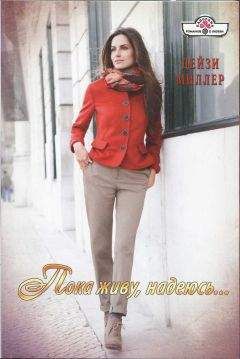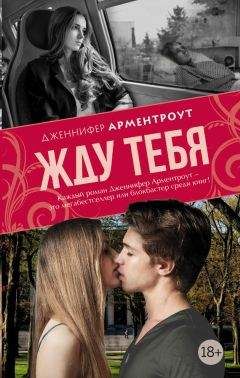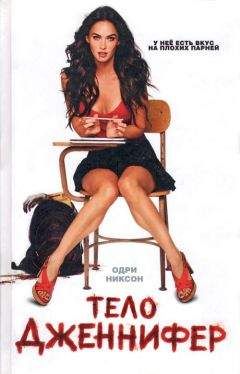Ричард Овери - Сталин и Гитлер
23. M. Meyer ‘A Musical Facade for the Third Reich’, in Barron ‘Degenerate Art’, p. 174; Golomstock, Totalitarian Art, p. 169.
24. Golomstock, Totalitarian Art, pp. 184–5.
25. Barron, ‘Degenerate Art’, p. 46; Golomstock, Totalitarian Art, p. 83; D. Welch ‘Nazi Film Policy: Control, Ideology, and
Propaganda’, in G. R. Cuomo (ed.) National Socialist Cultural Policy (London, 1995), p. 98.
26. Adam, Arts of the Third Reich, p. 94.
27. E. Bahr ‘Nazi Cultural Politics: Intentionalism vs. Functionalism’, in Cuomo, National Socialist Cultural Policy, p. 9.
28. A. Steinweis Art, Ideology, and Economics in Nazi Germany (Chapel Hill, NC, 1993), p. 22.
29. Golomstock, Totalitarian Art, pp. 81–3; L. Richard Le Nazisme et la Culture (Brussels, 1988), pp. 184–90.
30. Golomstock, Totalitarian Art, p. 83.
31. Spotts, Hitler and the Power of Aesthetics, p. 176; Golomstock, Totalitarian Art, pp. 150–51.
32. Yedlin, MaximGorky, p. 199;Golomstock, TotalitarianArt, pp. 183, 191.
33. Barron, ‘Degenerate Art’, p. 174.
34. A. Lawton (ed.) Russian Futurism through its Manifestoes, 1912–1928 (Ithaca, NY, 1988), p. 253.
35. A. Gladkov Meetings with Pasternak: a Memoir (London, 1977), p. 72.
36. L. Mally Culture of the Future: the Proletkult Movement in Revolutionary Russia (Berkeley, 1990), pp. 246–50, 253–5.
37. Lawton, Russian Futurism, p. 48.
38. V. Erlich Russian Formalism: History – Doctrine (3rd edn, New Haven, Conn., 1981), pp. 99–103, 118.
39. Brown, Proletarian Episode, p. 88.
40. Brown, Proletarian Episode, p. 89.
41. Ermolaev, Soviet Literary Theories, pp. 94–5.
42. Barron, ‘Modern Art and Polities’, p. 9; for a memoir of the exhibition see P. Guenther Three Days in Munich, July 1937’, in Barron, ‘Degenerate Art’, pp. 33–43.
43. W. Moritz ‘Film Censorship during the Nazi Era’, in Barron, ‘Degenerate Art’, p. 190; Meyer, ‘Musical Façade’, pp. 180–82.
44. O. Figes Natasha’s Dance: a Cultural History of Russia (London, 2002), pp. 476–7; P. Kenez Cinema and Soviet Society: From the Revolution to the Death of Stalin (London, 2001), pp. 94–5.
45. J. Garrard and C. Garrard Inside the Soviet Writers’ Union (London, 1990), pp. 31–2; Golomstock, Totalitarian Art, pp. 93–4.
46. Fitzpatrick, Cultural Front, pp. 197–8.
47. Vickery, ‘Zhadanovism’, pp. 101–5.
48. R. A. Brady The Spirit and Structure of German Fascism (London, 1937), pp. 90–91; Barron, ‘Modern Art and Polities’, p. 10; E. Fröhlich ‘Die kultur-politicische Pressekonferenz des Reichspropagandaministeriums’, Vierteljahrshefte für Zeitgeschichte, 22 (1974), pp. 353–6; V. Dahm ‘Der Reichskulturkammer als Instrument Kulturpolitischer Stenerung und Sozialer Reglementierung’, Vierteljahrshefte für Zeitgeschichte, 34 (1986) pp. 53–84; J. Petropoulos ‘A Guide through the Visual Arts Administration of the Third Reich’, in Cuomo, National Socialist Cultural Policy, pp. 121–52.
49. Brady, Spirit and Structure, p. 92.
50. S. Roberts The House that Hitler Built (London, 1937), p. 242; J. London (ed.) Theatre Under the Nazis (Manchester, 2000), pp. 8–9, 12.
51. Brady, Spirit and Structure, p. 88.
52. Steinweis, ‘Weimar Culture’, pp. 406–19.
53. Steinweis, Art;, Ideology, and Economics, pp. 4–6.
54. Golomstock, Totalitarian Art, pp. 220–22; Garrard and Garrard, Soviet Writers’Union, p. 24; Hingley, Russian Writers and Society, p. 207.
55. Steinweiss, Art, Ideology and Economics, pp. 74–9, 81–95.
56. J. W. Baird To Die for Germany: Heroes in the Nazi Pantheon (Bloom-ington, Ind., 1990), p. 145.
57. Baird, To Die for Germany, pp. 146–7.
58. Baird, To Die for Germany, p. 148.
59. E. J. Simmons ‘The Organization Writer (1934–46)’, in Hayward and Labedz, Literature and Revolution, pp. 84–5; Tregub, The Heroic Life of Nikolai Ostrovsky, pp. 7, 14, 38.
60. T. Lahusen How Life Writes the Book: Real Socialism and Socialist Realism in Stalin’s Russia (Ithaca, NY, 1997), pp. 13–15, 48–50, 53, 64–8, 79–80, 189–91.
61. R. Bartlett Wagner in Russia (Cambridge, 1995), pp. 227, 259–67, 271–2, 288–9.
62. Figes, Natasha’s Dance, pp. 480–81; Simmons, The Organization Writer’, p. 96; Fitzpatrick, Cultural Front, p. 207.
63. H. Ermolaev Censorship in Soviet Literature (Lanham, Md, 1997), p. 53.
64. Clark, The Soviet Novel, p. 4; M. Gorky Mother (Moscow, 1949). The introduction claimed: ‘though it was written ten years before the establishment of Soviet power in Russia, we count it the fi rst stone laid in the foundations of Soviet literature’ (p. 5).
65. Yedlin, Maxim Gorky, pp. 178, 180–83, 186, 192–3, 209 ff.
66. E. Levi Music in the Third Reich (London, 1994), pp. 178–82; P. McGilli-gan Fritz Lang: the Nature of the Beast (London, 1997), pp. 173, 174–6.
67. Levi, Music in the Third Reich, pp. 98–9, 192–3.
68. Meyer, ‘Musical Façade’, p. 175; on literary conventions see J. M. Ritchie German Literature under National Socialism (London, 1983), pp. 96–101; T. Alkemeyer and A. Pichantz ‘Insezenierte Körperträume: Reartikulation von Herrschaft und Selbstbeherrschung in Körperbildern des Faschismus’, in U. Hermann and U. Nassen (eds) Formative Ästhetik im Nationalsozialismus. Intentionen, Medien und Praxisformen totalitärer ästhetischer Herrschaft und Beherrschung (Weinheim, 1994), p. 88; R. Taylor Literature and Society in Germany 1918–1945 (Brighton, 1980), pp. 236–44.
69. Ermolaev, Censorship in Soviet Literature, pp. 1–6; G. V. Kostyrchenko ‘Soviet Censorship in 1945–52’, Voprosii istorii, 11–12 (1996), pp. 87–8.
70. Ermolaev, Censorship in Soviet Literature, pp. 7, 57; Kostyrchenko, ‘Soviet Censorship’, p. 92, gives the number of censors in the organization as 1,000; J. Plumper ‘Abolishing Ambiguity: Soviet Censorship Practices in the 1930s’, Russian Review, 60 (2001), pp. 527–8, 533.
71. Ermolaev, Censorship in Soviet Literature, p. 57; Kostyrchenko, ‘Soviet Censorship’, p. 92, gives the following fi gures for censorship work during the war: 235,031 newspaper editions checked; 207,942 Journal articles; 71,740 books; 158,998 brochures.
72. Plumper, ‘Abolishing Ambiguity’, pp. 530–31.
73. Plumper, ‘Abolishing Ambiguity’, pp. 535–7.
74. Plumper, ‘Abolishing Ambiguity’, p. 527.
75. Reid, ‘Socialist Realism’, p. 179.
76. Ermolaev, Censorship in Soviet Literature, pp. 43–5, 56; V. G. Lebedeva Totalitarian and Mass Elements in Soviet Culture of the 1930s’, Russian Studies in History, 42 (2003), pp. 81–4. On Fadayev see Vickery, ‘Zhdanov-ism’, pp. 114–15; R. Cockrell (ed.), introduction to A. Fadeev The Rout (London, 1995), pp. xi – xii.
77. Ermolaev, Censorship in Soviet Literature, p. 46.
78. H.-W. Strätz ‘Die studentische “Aktion wider den undeutschen Geist” im Frühjahr 1933’, Vierteljahrshefte für Zeitgeschichte, 16 (1968), pp. 347–53; Brecht, Poems, pp. 294, 568; Richard, Nazisme et la Culture, p. 211; Ritchie, German Literature, p. 68–9. Strictly speaking there were two fi rst authors, Marx and the German socialist Karl Kautsky.
79. Roberts, House that Hitler Built, p. 248.
80. See for example G. Neesse Die NSDAP: Versuch einer Rechtsdeutung (Stuttgart, 1935), frontispiece.
81. Moritz, ‘Film Censorship’, p. 188; R. Taylor Film Propaganda – Soviet Russia and Nazi Germany (London, 1998), pp. 145–6.
82. D. Welch Propaganda and the German Cinema 1933–45 (London, 2001), p. 14.
83. K. B. Eaton (ed.) Enemies of the People: the Destruction of Soviet iterary, Theater, and Film Arts in the 1930s (Evanston, Ill., 2002), pp. xx – xxi.
84. E. Braun ‘Vsevolod Meyerhold: the Final Act’, in Eaton, Enemies, pp. 151–9.
85. J. Rubinstein Tangled Loyalties: the Life and Times of Ilya Ehrenburg (London, 1996), pp. 45, 49–50, 69, 176.
86. Ermolaev, Censorship in Soviet Literature, p. 50.
87. J. E. Curtis (ed.) Mikhail Bulgakov: Manuscripts Don’t Burn, A Life in Diaries and Letters (London, 1991), p. 284, letter from Bulgakov to V. Veresayev, 11 March 1939.
88. L. Milne Mikhail Bulgakov: a Critical Biography (Cambridge, 1990), pp. 259–60.
89. Milne, Bulgakov, pp. 220–25; Curtis, Manuscripts Don’t Burn, pp. 229–30.
90. Taylor, Literature and Society, p. 215.
91. Strätz, ‘“Aktion wider den undeutschen Geist”’, p. 350; Taylor, Literature and Societyp, p. 218. In general see A. E. Steinweis ‘Cultural Eugenics: Social Policy, Economic Reform, and the Purge of Jews from German Cultural Life’, in Cuomo, National Socialist Cultural Policy, pp. 23–37.
92. Levi, Music in the Third Reich, p. 48.
93. Levi, Music in the Third Reich, pp. 30–31; E. Levi ‘Music and National Socialism: The Politicisation of Criticism, Composition and Performance’, in B. Taylor and W. van der Will (eds) The Naziftcation of Art: Art, Music, Architecture and Film in the Third Reich (Winchester, 1990), pp. 162–4; B. Geissmar The Baton and the Jackboot: Recollections of Musical Life (London, 1988), p. 69.
94. G. BennBriefeanF. W. Oetze 1931–1945 (Wiesbaden, 1977), pp. 33–5, letter from Benn to Oetze, 25 April 1934.
95. G. Benn Briefe an Tilly Wedekind 1930–1955 (Stuttgart, 1986), pp. 267–8, letter from Benn to Tilly Wedekind, 11 January 1938.
96. Benn, Briefe an F. W. Oetze, pp. 186–7, President, Reich Chamber of Writers, to Benn, 18 March 1938; see too F. J. Raddatz Gottfried Benn: Leben – niederer Wahn: Eine Biographie (Munich, 2001), pp. 168–73.
97. Taylor, Literature and Society, pp. 271–3.
98. D. L. Burgin ‘Sophia Parnok and Soviet-Russian Censorship, 1922–1933’, in Eaton (ed.), Enemies, pp. 44–5; Gottfried Benn described his years in the wilderness as a ‘double life’, Doppelleben.
99. On Beckmann see Barron, ‘Degenerate Art’, p. 203; on Pasternak, Gladkov, Meetings with Pasternak, pp. 88–90; on exile see M. Durzak (ed.) Die deutsche Exilliteratur 1933–1945 (Stuttgart, 1973), pp. 10–19. Some German artists and writers moved to the Soviet Union. See K. Kudlinska ‘Die Exilsituation in der USSR’, in Durzak, deutsche Exilliteratur, pp. 159–72.
100. Y. Yevtushenko (ed.) Twentieth-Century Russian Poetry (London, 1993), p. 180, ‘Requiem. 1935–40’, written 1961.
101. Yevtushenko, Russian Poetry, p. 184, ‘To Death’, 19 August 1939.
102. Barron, ‘Degenerate Art’, pp. 203, 269–70; N. Wolf Kirchner (London, 2003), pp. 86–90.
103. Lahuson, How Life Writes the Book, pp. 152–9.
104. G. D. Hollander Soviet Political Indoctrination: Developments in Mass Media and Propaganda since Stalin (New York, 1972), p. 210.
105. R. Stites Russian Popular Culture: Entertainment and Society since 1900 (Cambridge, 1992.), pp. 74–6; Fitzpatrick, Cultural Front, p. 212.
106. M. Kater ‘Forbidden Fruit? Jazz in the Third Reich’, American Historical Review, 94 (1989), pp. 16–20; H. Bergmeier and R. E. Lotz Hitler’s Airwaves: the Inside Story of Nazi Radio Broadcasting and Propaganda Swing (New Haven, Conn., 1997), pp. 138–44; C. Lusane Hitler’s Black Victims (New York, 2002), pp. 201–3.




